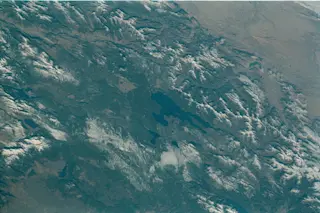The Yellowstone Caldera (the lowlands in the middle) with Yellowstone lake, taken from STS-92 in October 2000. Image: NASA. As usual, people are trying to rabble rouse when it comes to the Yellowstone Caldera. All these rumors that the government is trying to hide evidence of an impending eruption are pure fantasy, but that doesn't stop some people from acting out their delusions to the detriment of others who fall prey to this misinformation. Yes, the Yellowstone Caldera is a massive volcano that has the potential to produce huge eruptions, but no, there are no indications right now that any sort of eruption will happen any time soon -- and I'd be surprised if we see an eruption in our lifetime (just like any volcano that hasn't had a confirmed eruption in the last ~70,000 years). However, we're always learning more about the caldera and its underpinnings. A new study ...
Yellowstone Caldera: More Magma, Less Eruptible
Discover the truths behind the Yellowstone Caldera and debunk myths about potential eruptions based on seismic data analysis.
More on Discover
Stay Curious
SubscribeTo The Magazine
Save up to 40% off the cover price when you subscribe to Discover magazine.
Subscribe













